Continued - Part 3

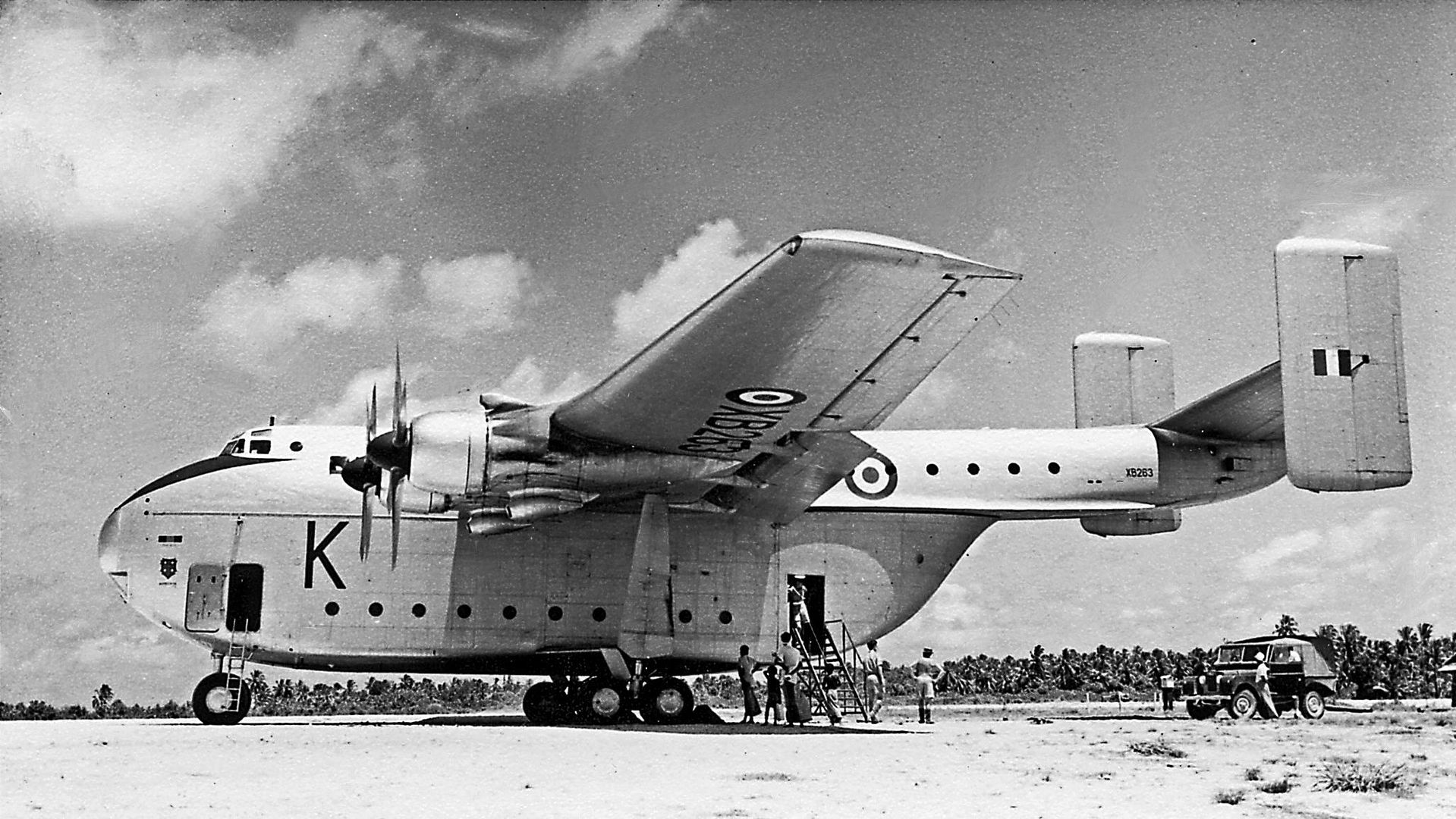
14th February 1958. This 47 Sqn R.A.F. Abingdon-based Beverley serial number XB263, piloted by F/Lt Peter Dudley, flew in the advance contingent of Pakistani workers who were to do most of the construction work to convert Gan from a sleepy island with a short crushed-coral landing strip to a busy RAF staging post with an 8,694ft/2,650m long concrete runway.
With the aid of the already on-site UK-based workers from Messrs Richard Costain & Co, the main contractors for the project to construct the staging post at Gan, the first job of these Pakistani workers was to build accommodation for the main force of temporary workers due to arrive from Pakistan. With this done Pakistani labourers arrived regularly on the island by R.A.F. planes and chartered boats — at the height of the building boom 1,200 Pakistanis, local Maldivians and UK workers were employed in the construction of the runway and infrastructure of a modern R.A.F. staging post/air base that included living quarters, runway, concrete aircraft parking area, air traffic control tower, medical centre, hangers, fuel storage tanks etc. etc.
Marine Craft
As well as a High-Speed Rescue launch the R.A.F. Marine Craft Unit at Gan operated two (later three) WW2 LCM (Landing Craft Men) boats for offloading cargo vessels bringing in stores and machinery. The arrival in March 1958 of two tugs and six lighters to be manned by Pakistani crews meant that most cargo was discharged from visiting vessels in much greater quantities than was possible by the R.A.F. crews alone. Although the loads were shared between the R.A.F. with their LCMs and the Pakistanis with their tugs and lighters, the bulk of heavy and bulky cargo and in particular the large quantities of cement in 112lb (50kg.) bags that arrived on palettes in ship-loads of 1,500 and 2,400 tons at a time was more suited to be off-loaded into lighters designed for the task rather than LCMs.
The experienced Pakistani tugboat crews and stevedores coped well and by the middle of the year there was a constant stream of tugboats and lighters from the anchored cargo vessels to the newly constructed long jetty that could accommodate two lighters at a time, one on either side. Whilst I don’t have the full figures for the period whilst I was at Gan (January to November 1958), between January and August 1958, 38 cargo vessels called at Gan and discharged over 20,000 tons of cargo with an average delivery rate of over 2,500 tons per month.
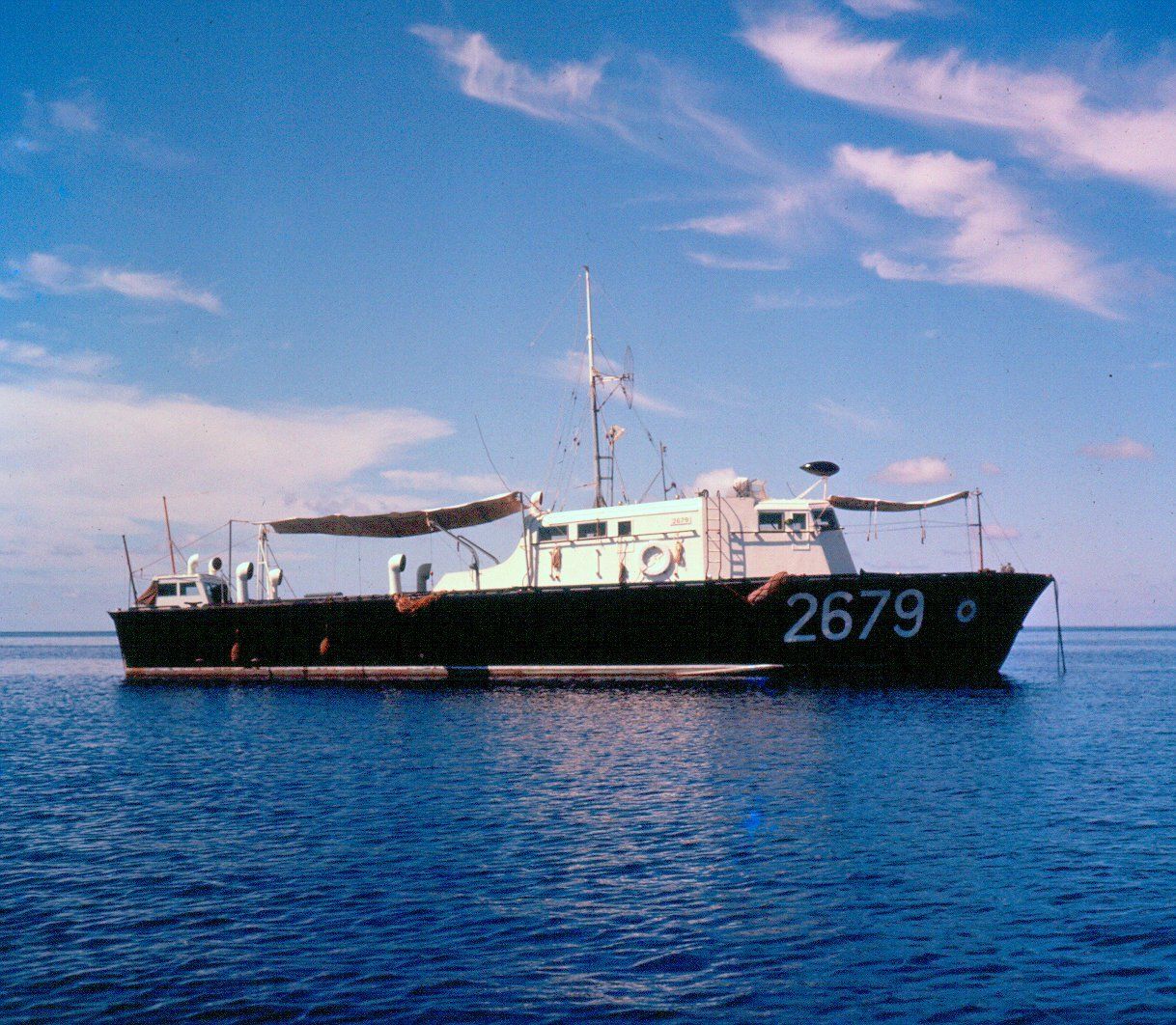
This R.A.F. High-speed recue launch was used to take the marine Pilot to ships arriving at Gan.
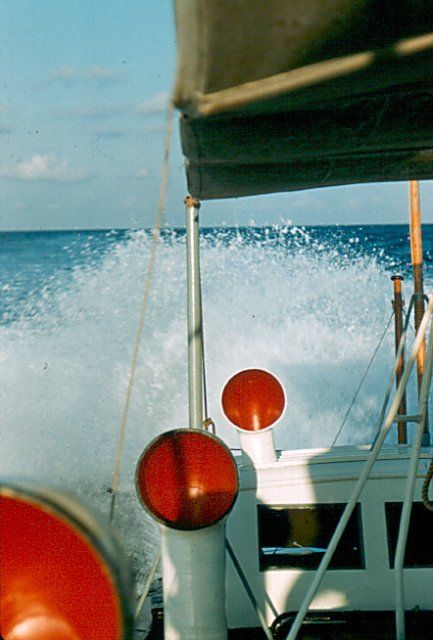
Below
In the early days these R.A.F. LCMs ferried the bulk of freight and cargo from cargo vessels anchored in the lagoon to the original short WW2 jetty as seen here. Once the longer and more modern jetty had been built the cargo was ferried ashore by Pakistani crewed tugs and lighters manned by experienced crews and stevedores.
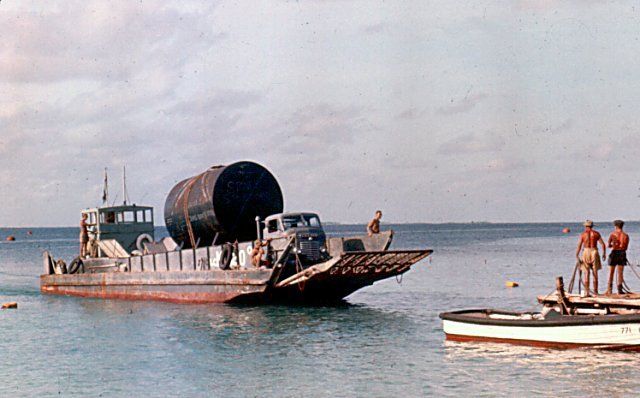
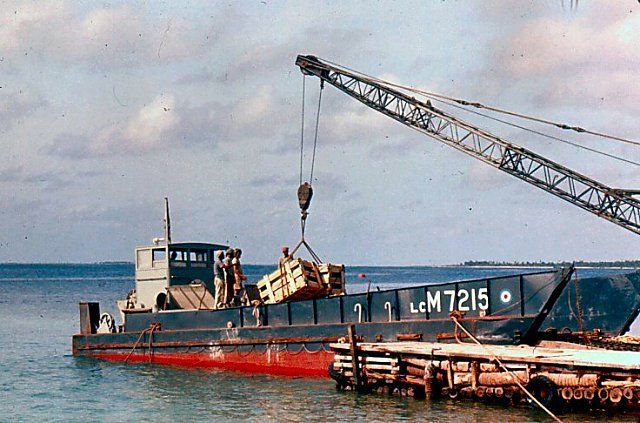
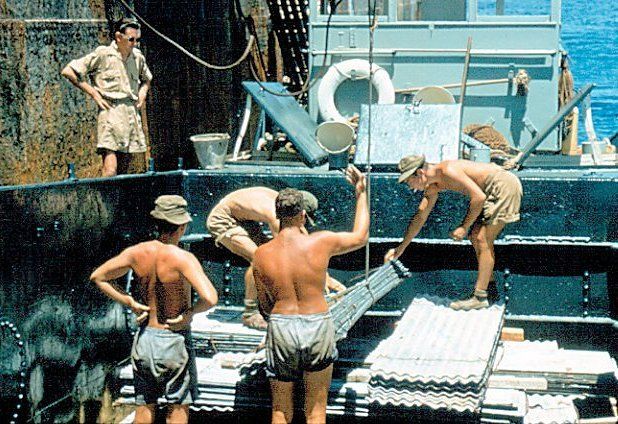
The original R.A.F. Marine Craft unit landing craft of the type used during the D-Day landings during WW2 were used for offloading smaller items of freight
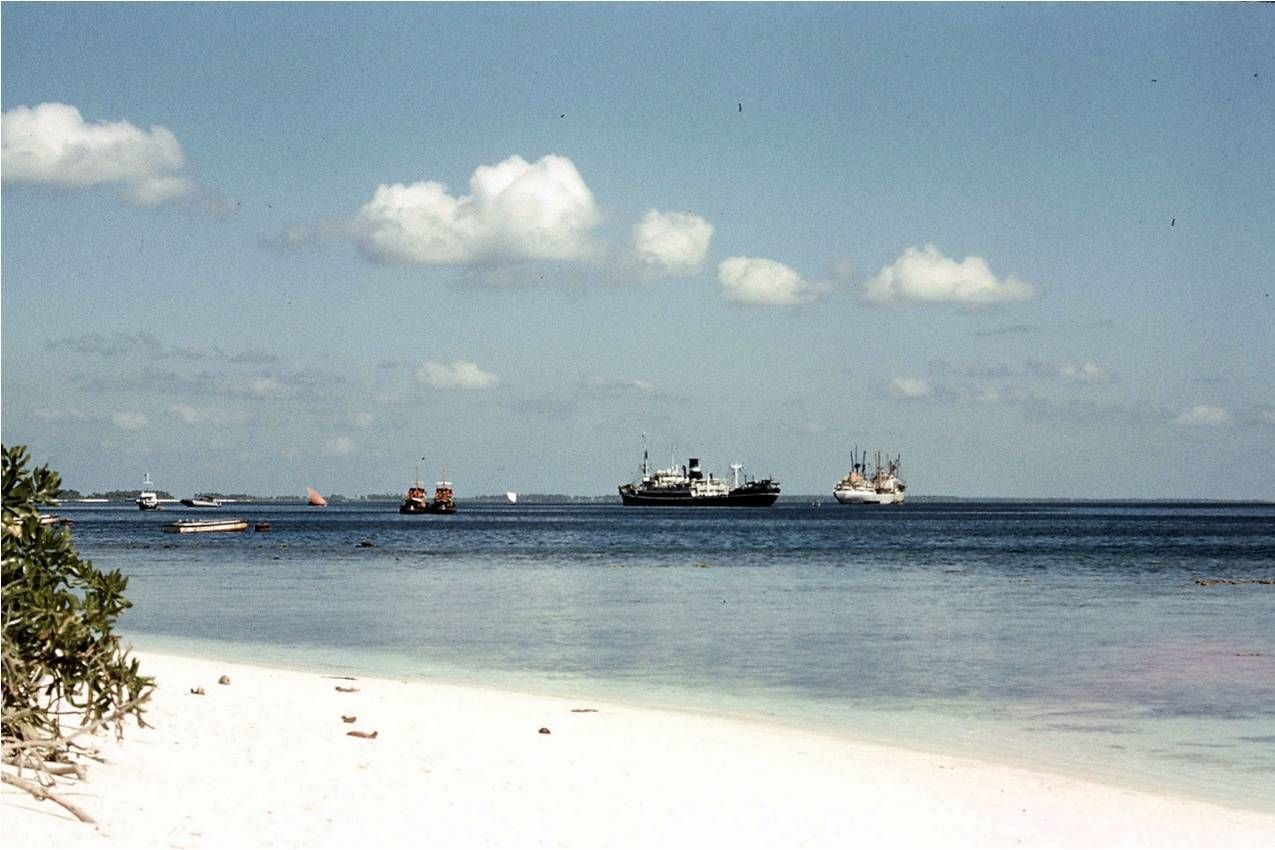
Brocklebank Line, the Liverpool-based shipping company had the main contract to bring in supplies and cargo necessary to build a modern airfield. This photo shows a Brocklebank vessel (left) and a Ben Line cargo ship (right) with cargo for Gan. Two newly arrived tugs can be seen tied-up to a buoy. From mid-1958 six lighters towed by these two tugs ferried most cargo ashore to the newly-built long jetty.
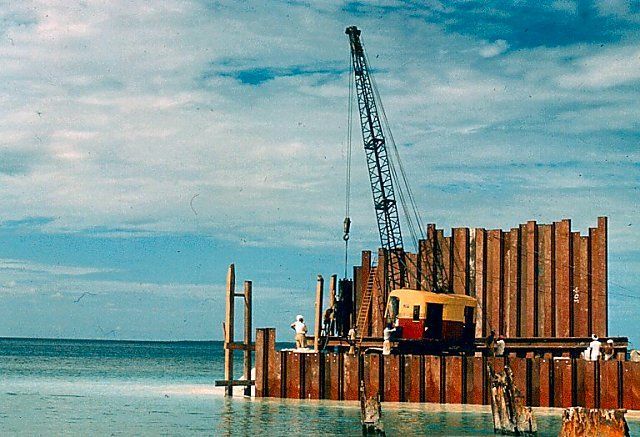
The new long jetty under construction. A channel was blasted through the coral reef and steel piles were driven deep into the seabed as shown here. This new jetty was dredged on either side to allow lighters to be off-loaded two at a time and replaced the original very short and rickety WW2 jetty.
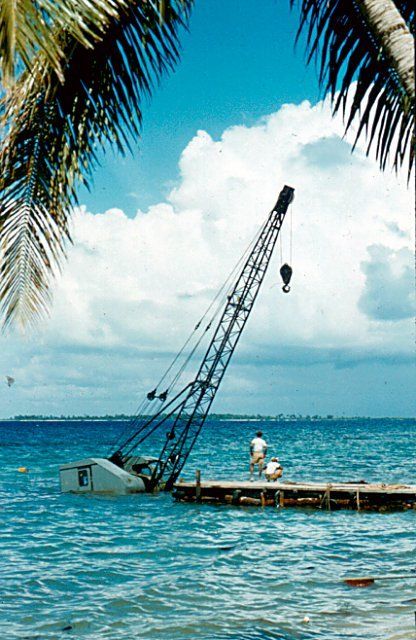
Sometimes crane drivers using the original WW2 jetty could get it badly wrong as seen here. A bulldozer (below) came to the rescue and dragged it onto the beach to be repaired!
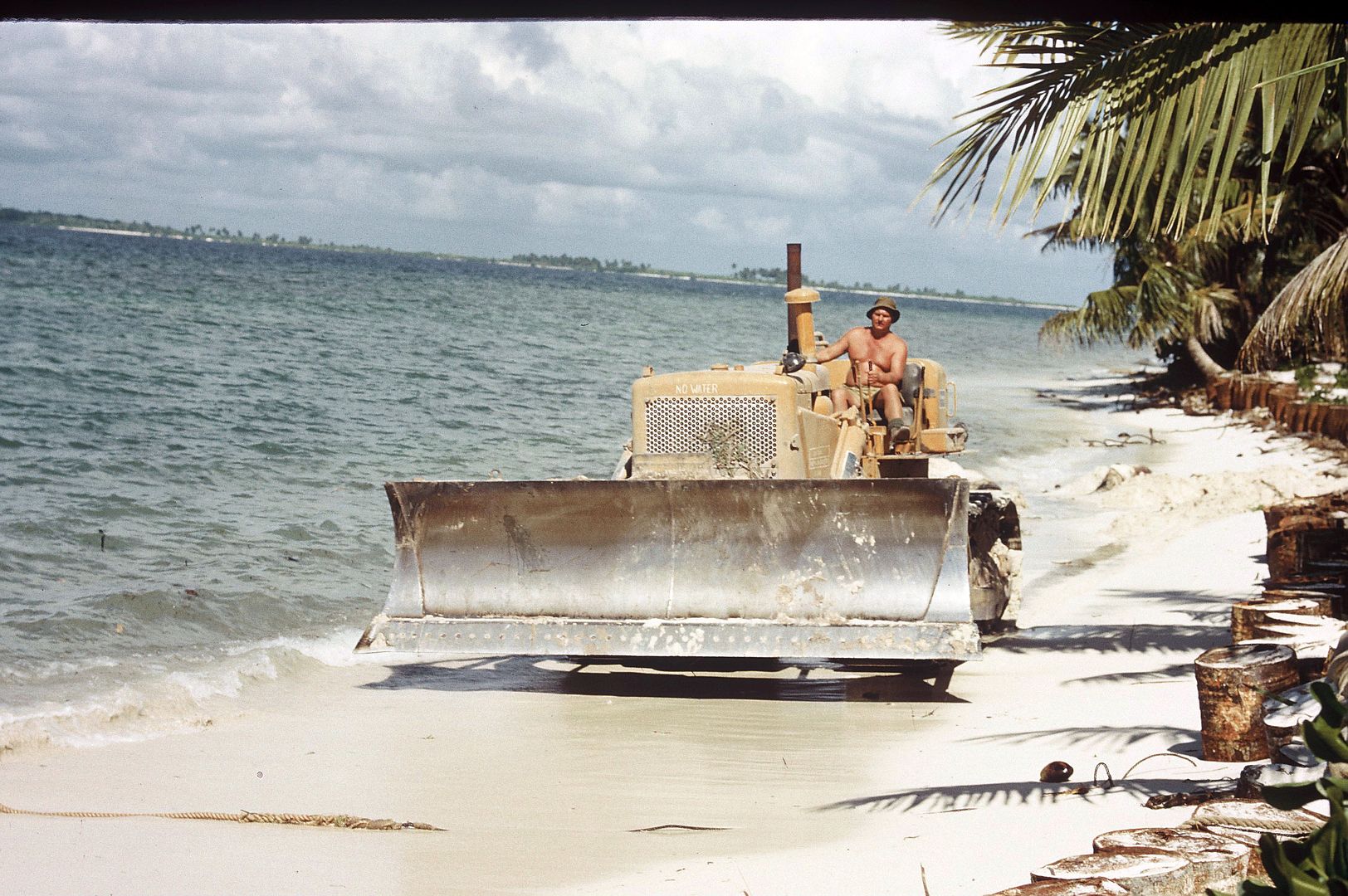
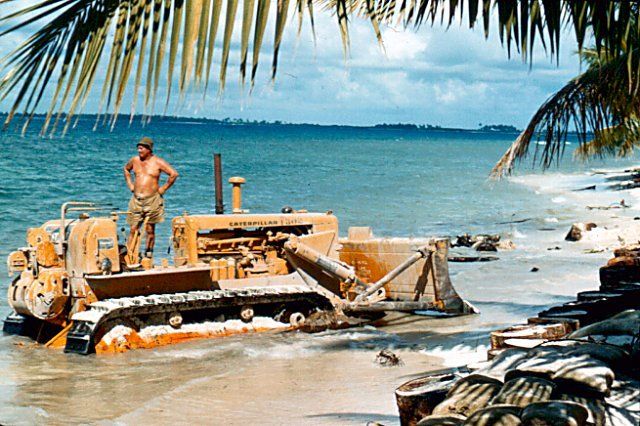
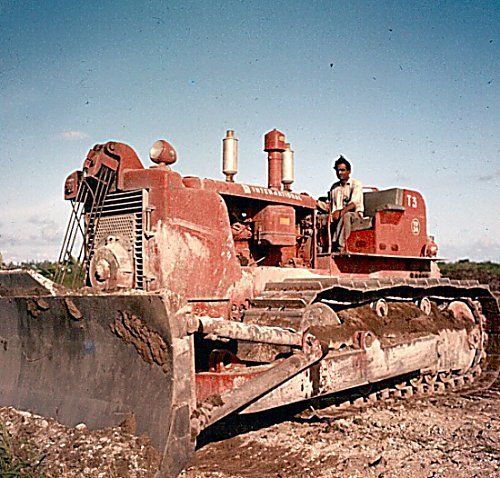
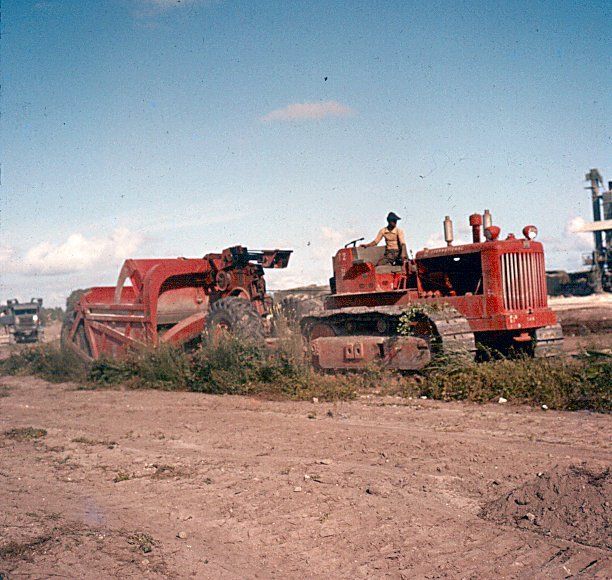
Bulldozers and Earthmovers cleared the trees and scrub from the island. In all 11,000 trees were cleared to make space for the new facilities.
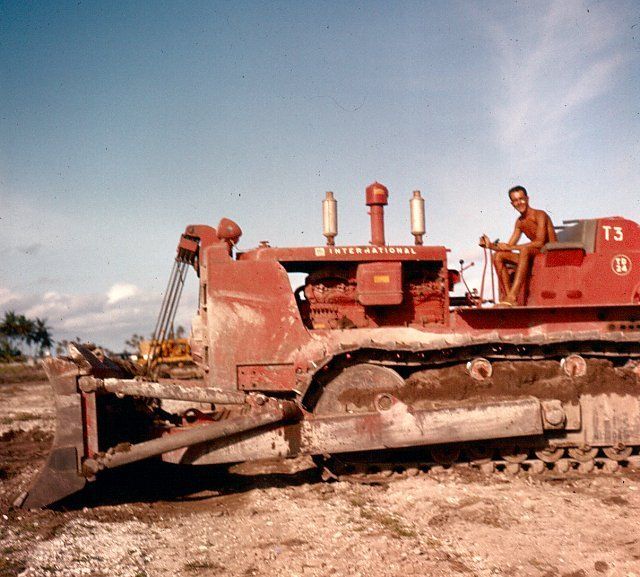
I just had to have a go! Not much to hit, but the biggest piece of kit I've ever driven.
More to come
WT